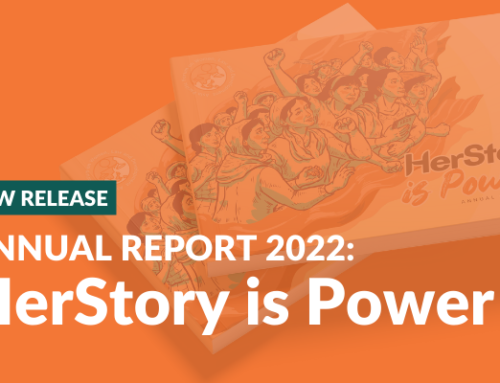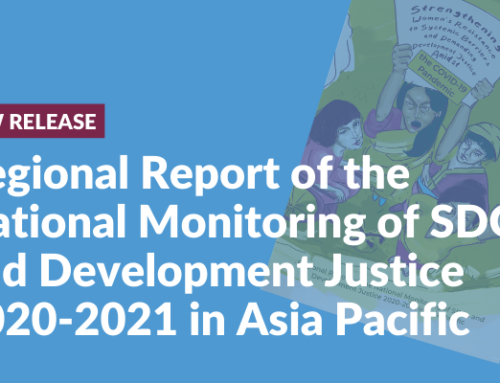by AASHA RAMESH, Member Tamil Nadu Women’s Forum
What are micro-finance institutions?
Institutions which give out small loans, especially to low income individuals and also, to collectives are termed micro-finance institutions (MFIs). The beneficiaries of these loans are primarily women comprising of the economically disadvantaged sections.
There are three main delivery channels for micro-finance services in India: self-help groups (SHGs) linked to banks (1980s), traditional money lenders/pawn brokers (for decades) and the profit oriented, non banking financial companies (NBFCs). Further, Societies, Trusts, cooperatives and the so called ‘not for profit’ companies under section 25 Companies Act lend to groups and individuals either at a higher interest rate comparable to SHG bank linkage model or very high interest rate comparable to NBFCs (the interest rates of NBFCs itself varies, but is definitely higher than the bank-SHG linkage model).
Microfinance is no longer limited to just providing loans. In fact, the microfinance sector has traversed a long journey from micro savings to micro credit and then to micro enterprises and now entered the field of micro insurance, micro remittance and micro pension.
According to the Government, the MFIs and SHGs, micro-credit is seen as a great opportunity for the rural poor in India to reach reasonable economic, social and cultural empowerment, leading to better living standards and improved quality of life for participating households.
The Situation
It is estimated that there are approximately 6,953, 000 SHG savings linked with banks. Out of which 5,310,000 are exclusively women SHGs. The remaining SHGs are mixed and in some cases could be all male too. The ground reality is that women’s SHGs are mushrooming rapidly. The World Bank has been a key player in promoting the formation of SHGs in large numbers, through the government. Besides, several civil society organizations/NGOs who were earlier into savings and credit programmes have now become partners of the MFIs and exploiting women’s economic vulnerability.
In Tamil Nadu the largest numbers of SHGs are run by the Mahilir Thittam, which has been set up by the Women’s Development Corporation, which is a state government entity. This programme reaches out to women both in urban and rural areas. Women SHG members are provided training on group concept, micro finance, gender, leadership and social issues. In rural areas SGHs are federated to form large SHG federations. NGOs mobilise the women and form them into SHGs and impart training, while bank linkage is facilitated by the Tamil Nadu Women’s Development Corporation. In addition there are self help groups formed and operated by NGOs independent of Mahalir Thittam. However, the majority of them are run by the Mahilar Thittam.
The SGSY programme, which was earlier under the rural development department, now is operated by the Women’s Development Corporation, promoting livelihood options. In the last decade there has been a proliferation of profit oriented MFIs emerging in Tamil Nadu- under the guise of NBFCs, ‘not for profit’ companies. A significant number of NGOs are part of this micro-finance initiative.
Micro finance targets largely the poor and marginalised women, who are dalits, tribals and other rural poor women, who are formed into SHGs. The interest rates charged are as high as 24%, according to the women, by the Mahilir Thittam. But in some cases, where NGOs were linked to the NFBCs for micro-finance, the interest rates charged are even higher.
Impact on Women
Women have been pushed into a vicious cycle of indebtedness by the micro-finance institutions. This is a World Bank initiative through the government and civil society organizations, fooling women that through such linkages, their economic situation will improve.
The myth that micro-credit will improve women’s status has proved wrong. On the other hand, women who have become prey to micro-finance have found themselves burdened with more work and in fact having to take on multifold work to pay back the loan taken.
It was also found that violence against women had increased There were several cases where the husbands had compelled their spouses to take loans. This money, in many cases was in the control of the men who used it up in drinking liquor. Then under the influence of drinks, the men would resort to violence against their wives.
There were also instances when women, in the dire need to repay the loan, resorted to selling their bodies. In other words, the women are forced into prostitution to earn the needed money.
The micro-finance institutions appoints agents who are like sharks. When women default in the payment, these agents continuously harass the women. There have been cases where women have committed suicide, unable to pay loans and fearful of the MFI sharks. Such is the harassment women are subjected to. Families who have got into severe indebtedness are faced with a situation, where they have had to discontinue the education of the children. The family is caught in the debt–trap, unable to pay for the education, unless the loan is repaid.
The MFI’s lure women into their net, thus weakening the government’s Mahilir Thittam, where women could get loans on a reducing interest rate of about 24%, which itself, is quite high. In the NFBCs and other private MFI’s, the interest rates are exorbitant. But the catch here is that women have a lot of paper work formality to avail loan from the government run Mahilir Thaittam, whereas the private money landing institutions have minimal paperwork, with quick and easy, dispensation of loans.
However, one needs to acknowledge that though women have learnt to manage their finances through engagement with MFI’s, it has not been able to truly empower women.
Another glaring fact is that the most affected through MFIs are the most marginalised sections(dalits, tribals, minorities) who continue to become easy prey due to their economic vulnerability.
A major concern is that the emergence of MFIs has affected large numbers of SHGs that were previously formed and federated through processes of education being a tool for empowering women, for example the Mahila Samakhya Sanghas and other similar women’s collectives. These SHGs earlier were active in addressing social issues affecting women’s lives, are now been relegated to being just credit groups.
Ways Forward
While SHGs are here to stay, there is a need to impress upon the State and other relevant authorities to recognise the plight of women caught in the web of MFIs. Therefore the following suggestions and recommendations are made with the hope that these can be implemented in the near future, so that women’s plight can be addressed and they find some recourse to improve their lives:
- Enact legislation at state and national level to regulate profit oriented MFIs and bring NBFCs, not for profit companies under section 25, societies, trusts, cooperatives, banks, other financial institutions under its fold.
- Immediate stoppage of conversion of agriculture land to industrial purposes in Tamil Nadu (there has been no land reform in this region and landlessness has been traditionally higher than Indian average) to prevent migration of landless to towns
- Invest in agriculture growth with a focus on strengthening food and nutritional security
- Immediate stoppage of conversion of agriculture land to industrial purposes in Tamil Nadu (there has been no land reform in TN and landlessness has been traditionally higher than Indian average) to prevent migration of landless to towns
- Invest in agriculture growth with a focus on strengthening food and nutritional security
- To increase priority sector lending by banks and generally strengthen bank linkages
- To provide Bank loans to poor dalit women, without insisting for any collateral such as land etc.
- To strengthen implementation of schemes for dalits, adivasis and poorest in rural areas
- Increase the Mahatma Gandhi National Rural Employment Guarantee Scheme (MNREGS), currently Rs.150 per day.
- The government should give land to women in their names, so that they can be food secure and avail bank loans for improving their economic status
- to initiate national urban employment guarantee scheme with at least Rs 200 as minimum wages
- to ensure that local poor especially the dalits and other marginalized sections receive priority for employment by companies located in the jurisdiction of their village panchyat.
- Promote formation of labour cooperatives by the companies, so that these cooperatives can be contracted for labour.
- There should be some regulation to cap the interest rate, so that the MFI hawks are regulated.
(Paper presented at Framing Development Justice -2013 Asia Pacific Regional Consultation with Special Procedures Mandate Holders 27-29th October 2013 Dhaka)





